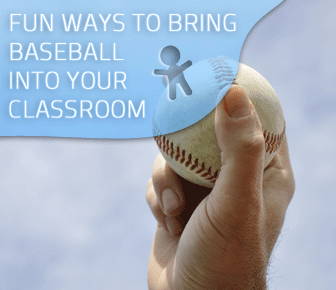My Proposal was a Slamdunk!: 10 Sports Idioms Your Students Need to Know for the Workplace


Though considered the great American national past time, baseball is popular in many of your students’ home countries as well. These baseball themed activities will be the perfect combination of language learning and springtime fun for you and your students.
One of the most famous of all baseball poems is “Casey at the Bat” by Earnest Thayer. First published in 1888 in The San Francisco Examiner, the poem has become a part of the American pop culture. You may want to initially present the poem to your students with one of the videos on YouTube. Disney’s 1946 version of the cartoon animation of the classic will give your students some context for the poem and, perhaps, elicit a few smiles! Follow that with a printed text of the poem. As you read through the poem with your class, point out any baseball lingo or idiomatic expressions and review their meanings. Make sure your students have an overall understanding of the situation and the actions of the characters before moving on to the extension activities.
This classic baseball poem brings up an interesting question. Who is affected by the success or failure of a sports team? Most people would assume the players are those most affected, but the outcome of sports games can affect the spectators as well as the players as it did in Mudville. Challenge your students to think of a time when they were emotionally affected by sports, particularly as a spectator then put them in discussion groups to talk about it. How did they feel? Why? What made them feel connected to the team? Ask your students to examine the crowd’s reaction in Thayer’s poem and ask your students to note how the crowds were affected by the game they were watching.
Some sports spectators may become too involved when it comes to the players that they love. Show your students this article on a football fan who suffered a heart attack at a pivotal moment in his favorite team’s game. How do your students feel about this dedicated sports fan? What would they ask him if they could talk to him in person? What advice would they give? Have your discussion groups come up with some advice to give this dedicated fan.
Many baseball terms have worked their way into American culture in non-sports related ways. Give your students some of these baseball idioms used in English and challenge them to guess their meanings. Then, see if anyone in your class can give an example of a baseball term or other sports term that is used in everyday language in their home countries. They may not be able to. You may want to have your students read this article from USA Today, which explores baseball jargon used in business context. Then as a class, brainstorm as many sports terms used in non-sports contexts as you can. Once the list is finished, have your students work in groups to write a skit that includes as many of these idioms as possible, and then have each group perform their skit for the class.
Many people, children in particular, look up to sports figures and consider them heroes. However, anyone who watches the news knows that these celebrities make as many bad decisions as any other person. Does a sports figure have a greater responsibility to act in a more honest and respectable way because children do look to him as a hero? If they are role models, do they have an obligation to the fans and kids to act like one? Ask your class these questions and let each person weigh in on the topic. You may want to bring up examples such as Pete Rose and Barry Bonds and let your students do some research into their specific missteps before making their final decisions. Then separate your class into two groups, each in support of one side of the issue, and ask each group to articulate the reasons which support their opinion. Finish by having each person write a reaction in which he or she explains why he takes the position that he does on the issue.
To celebrate the close of your baseball unit, take a movie day and watch A League of Their Own, the classic movie that portrays the woman’s baseball league creation and close. Do your students think they made the right decision to dissolve the league? Should women be allowed to play professionally with men? You may want to have an informal conversation with your class.
Alternately, you may want to take your students to a live baseball game! Many minor league teams offer tickets at prices even teachers can afford, or make the game an optional social event for students in your program. They will have fun watching a live game and experiencing all the festivities that the stadium has to offer.
Of course, playing a game outside with your students is sure to score big with your class as well provided you have the weather and the facilities that make it possible.
What activities have you incorporated successfully?